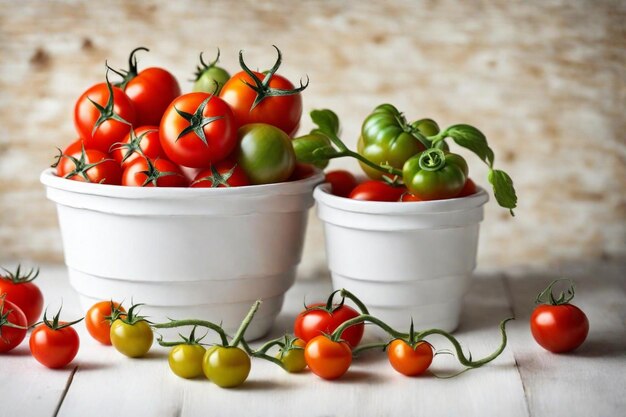The Ultimate Guide to Keeping Tomatoes Fresh in the Refrigerator 🍅
When it comes to food storage, keeping tomatoes fresh can sometimes feel like a lost cause. However, with the right approach, you can extend their shelf life significantly. So, let's dive into the fascinating world of tomatoes and explore how to maintain their juicy goodness right from your fridge.
Why Storing Tomatoes Properly Matters
Tomatoes are a staple in households around the world—a versatile ingredient found in countless recipes. Yet, they are notoriously tricky to keep fresh. Proper storage not only helps maintain their flavor and texture but also reduces food waste. Understanding the science behind tomato storage is your first step to prolonging their freshness.
The Science of Tomato Freshness
Tomatoes continue to ripen post-harvest due to ethylene gas, a natural plant hormone that they emit. Depending on how they're stored, this ripening process can either be stalled or accelerated. Temperature and airflow are critical factors influencing how ethylene gas affects the ripening of tomatoes.
Key takeaway: Aim to regulate temperature and allow for proper airflow when storing tomatoes in your fridge.
The Ideal Refrigerator Environment
Refrigerators offer a cool and controlled environment that can slow the ripening process, although they need to be set correctly for optimal results. Too cold, and you risk losing flavor and texture; too warm, and ripening might continue too quickly.
Optimal settings:
- Temperature: Around 10°C to 12°C (50°F to 54°F), if your fridge allows customization, is ideal for tomatoes.
- Airflow: Ensure airflow by not overcrowding shelves or bins.
Step-by-Step: Preparing Tomatoes for Refrigeration
Before tossing your tomatoes into the fridge, consider these prep steps to ensure they have the best chance for longevity.
1. Sort Your Tomatoes 🍅
Sort tomatoes according to their ripeness. This allows for targeted storage strategies:
- Ripe: Ready to be consumed soon, they can be immediately refrigerated to extend shelf life.
- Unripe: These might benefit from a few days at room temperature to reach peak ripeness before chilling.
2. Choose the Right Storage Container
Ventilated containers or bags are preferred to allow ethylene gas to escape. Look for containers specifically designed for produce to help maintain the right humidity level.
3. Avoid Moisture Retention
Ensure tomatoes are dry before storing, as moisture can accelerate spoilage. A quick rub with a clean paper towel should suffice.
4. Remove Stems
If present, gently remove stems to prevent puncturing and increase longevity.
Techniques for Extending Freshness
Maintaining tomato freshness goes beyond the basics. Incorporate these techniques to further enhance your food storage game.
1. Keep Slices Fresh
For cut tomatoes, place them in an airtight container, face down to avoid exposure, and consume them within a couple of days to maintain quality.
2. Freeze for Future Use ❄️
While refrigeration is great for short-term storage, freezing is a viable option for long-term preservation. Blanch tomatoes before freezing to preserve flavor and texture.
3. Enjoy at Room Temperature
If you've refrigerated tomatoes, bring them to room temperature before eating to revive texture and flavor. This step is especially significant for salads and sandwiches.
Common Mistakes to Avoid
Even with good intentions, storage mistakes are easy to make. Steer clear of these pitfalls to ensure your tomatoes remain fresh.
Overcrowding the Fridge 🚫
Packed shelves discourage airflow, so avoid piling tomatoes together. This can lead to uneven temperatures and premature ripening.
Storing Near Ethylene Emitters
Other fruits like apples and bananas can increase ethylene levels. Keep tomatoes separate to prevent accelerated ripening.
Frequently Asked Questions
Should all tomatoes be refrigerated?
Not necessarily! Store ripe tomatoes in the fridge but let unripe ones ripen at room temp first. Once ripe, refrigeration is advisable.
How does refrigeration affect the flavor?
Tomatoes may lose flavor when refrigerated because cool temperatures can stunt the production of flavor compounds. Consumption at room temperature can help offset this.
Can I store tomatoes in a plastic bag?
Using a perforated plastic bag can be fine if it's the only option, but a ventilated container is superior for airflow.
Tomato Storage: Quick Tips & Tricks 👍
Keeping tomatoes fresh is more of an art than a science. Here’s a quick bullet list to reference:
- 🌡️ Optimal Temp: Aim for 10°C to 12°C (50°F to 54°F)
- 🍅 Sort & Store: Keep ripe tomatoes refrigerated, let unripe ones ripen first.
- 💧 Dryness: Ensure they're dry, remove any moisture.
- 🚪 Airflow: Use ventilated containers to allow ethylene gas escape.
- Avoid Overcrowding: Ensure adequate space around each tomato.
By following these insights and strategies, you’re well on your way to enjoying delicious, fresh tomatoes longer. Whether tossed in a salad or simmered into a sauce, your efforts to care for these fleshy fruits will not go unnoticed. Enjoy the bountiful flavors of fresh tomatoes all year round!
